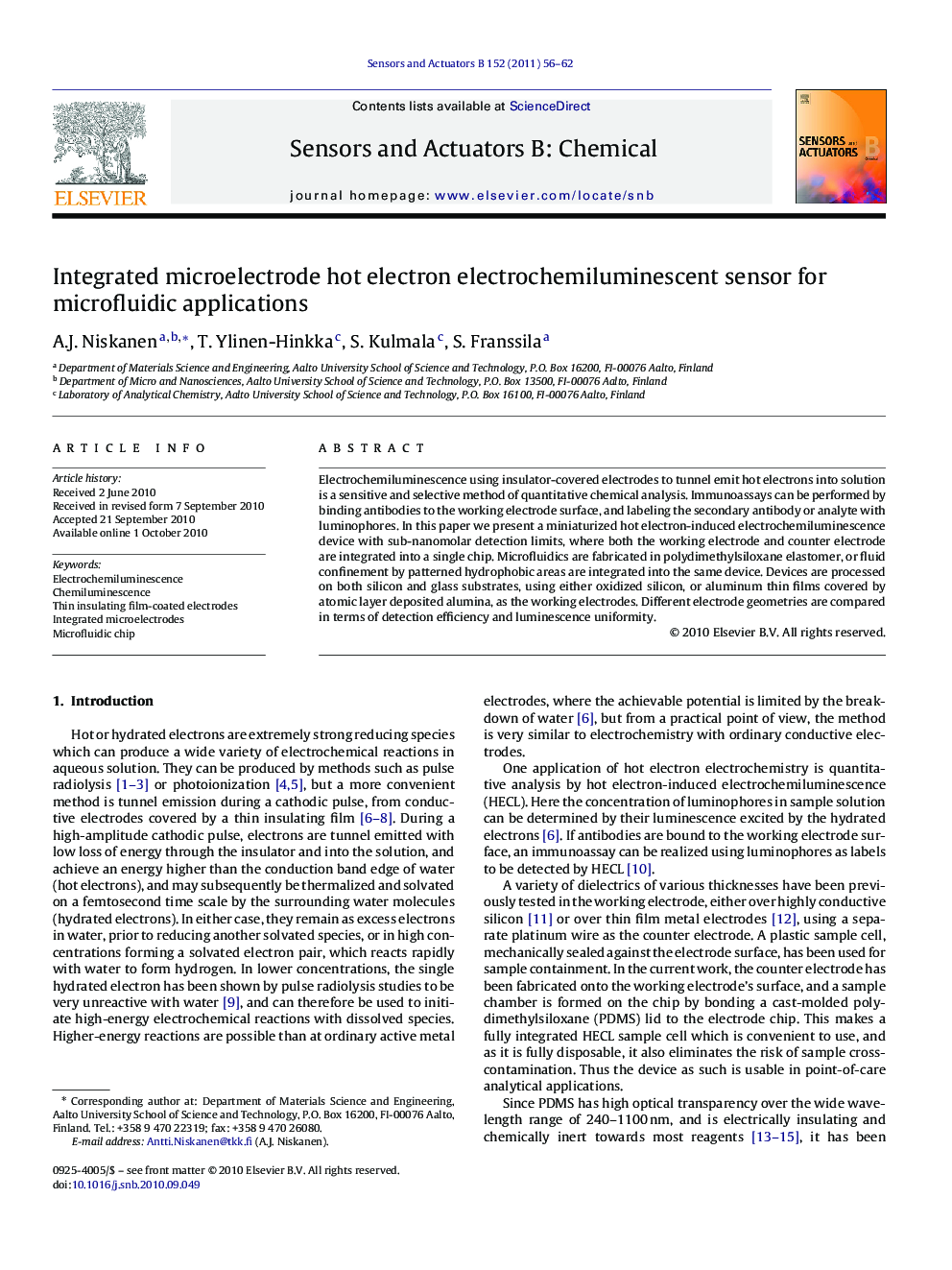| Article ID | Journal | Published Year | Pages | File Type |
|---|---|---|---|---|
| 744663 | Sensors and Actuators B: Chemical | 2011 | 7 Pages |
Electrochemiluminescence using insulator-covered electrodes to tunnel emit hot electrons into solution is a sensitive and selective method of quantitative chemical analysis. Immunoassays can be performed by binding antibodies to the working electrode surface, and labeling the secondary antibody or analyte with luminophores. In this paper we present a miniaturized hot electron-induced electrochemiluminescence device with sub-nanomolar detection limits, where both the working electrode and counter electrode are integrated into a single chip. Microfluidics are fabricated in polydimethylsiloxane elastomer, or fluid confinement by patterned hydrophobic areas are integrated into the same device. Devices are processed on both silicon and glass substrates, using either oxidized silicon, or aluminum thin films covered by atomic layer deposited alumina, as the working electrodes. Different electrode geometries are compared in terms of detection efficiency and luminescence uniformity.
